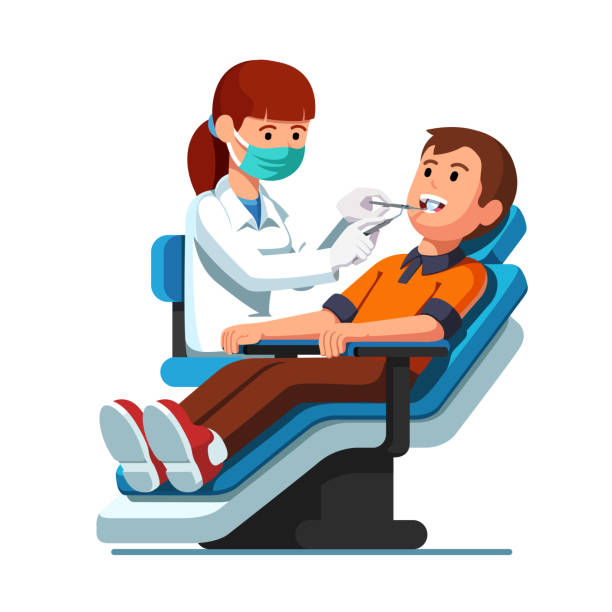The Benefits of Normal Checkups to a Dentist Eugene Oregon
The Benefits of Normal Checkups to a Dentist Eugene Oregon
Blog Article
Check Out the Series Of Dental Issues Dentists Commonly Take Care Of
From the prevalent trouble of tooth cavities caused by microbial activity to the extra perilous progression of periodontal condition, dental specialists should be adept at early detection and intervention. Tooth level of sensitivity, commonly resulting from worn enamel, adds an additional layer of complexity, while the early recognition of oral cancer cells can be life-saving.
Tooth Cavities and Dental Caries
Cavities, also understood as oral cavities, are created by the demineralization of tooth enamel due to acid-producing microorganisms in the mouth. If left untreated, tooth cavities can lead to considerable dental difficulties, consisting of infections and tooth loss.
To diagnose tooth cavities and tooth degeneration, dental professionals use a combination of visual examinations, oral X-rays, and in some cases laser fluorescence tools. For more sophisticated decay, a dental practitioner might need to eliminate the compromised tissue and bring back the tooth with fillings made from products such as composite resin, amalgam, or porcelain.
Safety nets are extremely important in combating dental caries and dental caries. Normal dental examinations, correct cleaning and flossing methods, and a well balanced diet regimen low in sweet foods and drinks are essential practices that sustain oral health and lessen the threat of cavities.
Gum Condition

Periodontitis takes place when plaque, a sticky movie of germs, solidifies into tartar and accumulates below the gum tissue line. This triggers the periodontals to retreat from the teeth, creating pockets that become infected. As the body's immune system battles the microorganisms, the bone and connective tissue that hold teeth in area are broken down. The danger factors for gum disease include inadequate dental hygiene, smoking, diabetes mellitus, and hereditary tendency.
Dental practitioners identify periodontal condition with medical exam and periodontal probing to measure pocket depths around the teeth. Treatment might entail scaling and root planing to remove tartar and bacteria from tooth surfaces and underneath the periodontals.

Tooth Sensitivity
Beyond gum tissue condition, another usual oral issue that individuals regularly come across is tooth sensitivity. Defined by a sharp, short-term pain in feedback to stimuli such as warm, cold, wonderful, or acidic foods and beverages, tooth level of sensitivity can dramatically affect an individual's top quality of life - eugene dentist. This problem generally emerges when the protective enamel layer of the teeth comes to be put on down or when the gums recede, revealing the underlying dentin. Dentin contains microscopic tubules that attach to the nerve endings within the tooth, consequently transferring the agonizing experiences.
Furthermore, oral procedures, fractured teeth, and gum tissue illness can reveal the dentin. To reduce tooth sensitivity, dental professionals may recommend using tooth paste developed for sensitive teeth, fluoride therapies to enhance enamel, or oral bonding to cover exposed dentin.
Ultimately, dealing with tooth level of sensitivity needs a thorough approach that consists of both safety nets and targeted therapies to ease pain and safeguard the oral structures.
Dental Cancer
Oral cancer, a content possibly life-threatening and significant problem, commonly flies under the radar in regular oral care discussions. This sort of cancer can impact any kind of component of the mouth, consisting of the lips, tongue, cheeks, flooring of the mouth, hard and soft palates, sinuses, and throat. Early discovery is important for effective therapy, yet lots of instances are diagnosed at advanced phases as a result of subtle initial signs and symptoms.
Misaligned Bites
Misaligned bites, likewise referred to as malocclusions, are a common dental issue that can dramatically affect both dental health and wellness and total lifestyle - dentist eugene or. These conditions occur when the top and lower teeth do check it out not align properly, causing problems in biting, eating, and also speaking. Malocclusions can be identified right into various kinds, including overbites, underbites, crossbites, and open attacks, each providing distinct challenges that call for tailored therapy methods
The sources of misaligned attacks are varied and can consist of hereditary aspects, very early loss of baby teeth, thumb sucking, and injuries to the jaw. Signs frequently consist of pain or pain in the jaw, regular biting of the internal cheeks, and an increased risk of dental cavity and gum tissue disease due to difficulty in preserving dental health.
Orthodontists and dental professionals use a variety of treatments to address misaligned attacks, from typical braces and clear aligners to extra innovative surgeries in extreme instances. Early diagnosis and therapy are essential to stop problems such as temporomandibular joint (TMJ) conditions and abnormal endure teeth. Via comprehensive evaluation and individualized therapy plans, oral experts play an essential role in correcting malocclusions and improving people' oral function and appearances.
Conclusion
Dental practitioners address a range of oral concerns, each with unique obstacles and therapy procedures. Dental caries and dental cavity result from bacterial activity that jeopardizes tooth enamel, while periodontal illness can intensify from gingivitis to extreme gum problems. Tooth level of sensitivity involves discomfort from thermal stimulations, requiring specific treatment. Early discovery of oral cancer cells is essential for effective intervention. Misaligned bites impact both oral health and lifestyle, anonymous frequently needing surgical or orthodontic solutions to correct.
To diagnose cavities and tooth degeneration, dentists use a mix of aesthetic exams, oral X-rays, and occasionally laser fluorescence devices.Beyond gum tissue disease, an additional typical oral concern that clients frequently run into is tooth level of sensitivity. Additionally, dental procedures, fractured teeth, and gum tissue disease can reveal the dentin. To mitigate tooth level of sensitivity, dental practitioners might advise using tooth paste created for sensitive teeth, fluoride treatments to enhance enamel, or oral bonding to cover revealed dentin. Cavities and tooth decay result from microbial activity that compromises tooth enamel, while gum tissue condition can rise from gingivitis to serious periodontal conditions.
Report this page